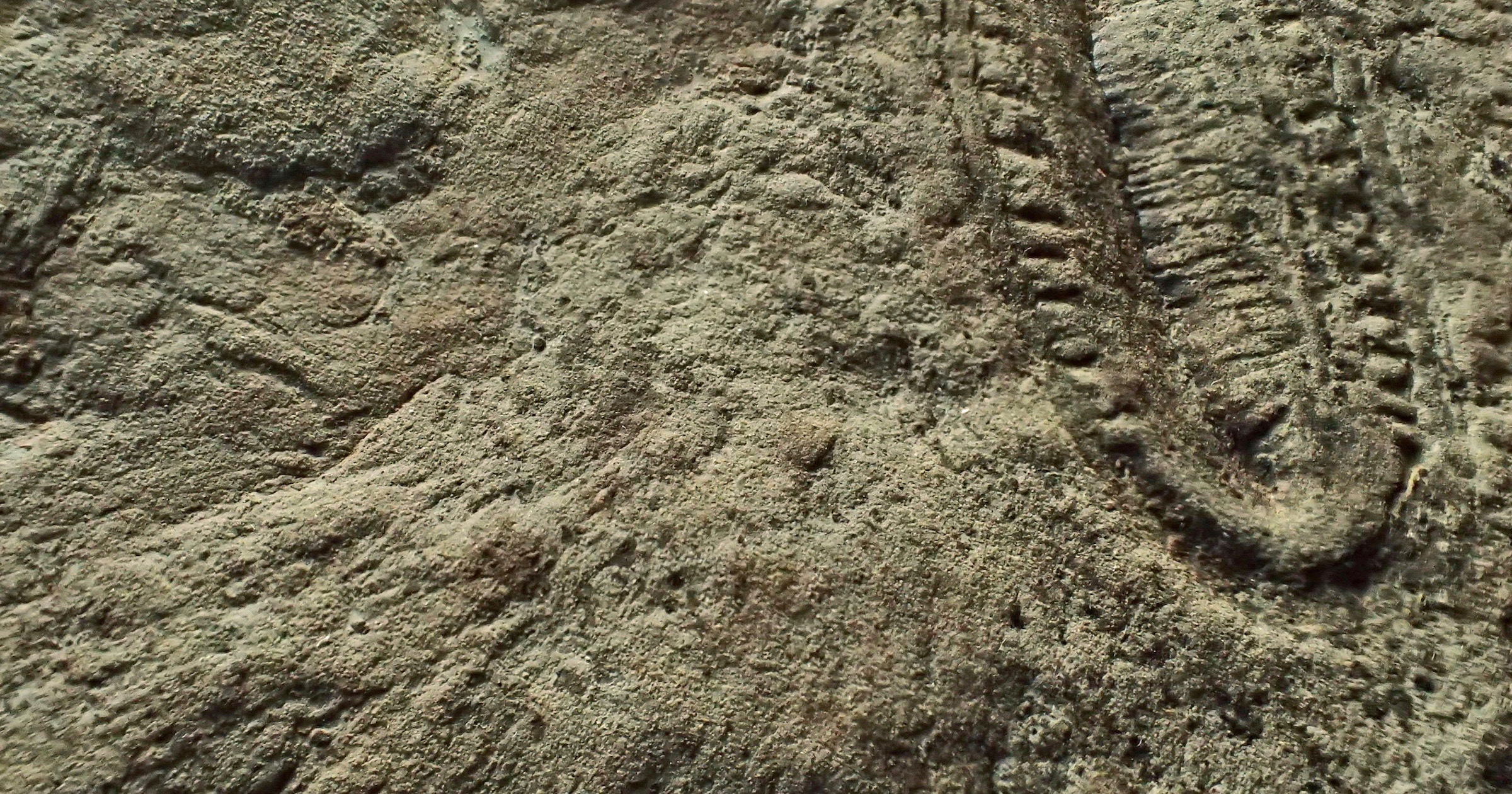 Evolution
Evolution
Kimberella — Controversial Scratch Marks

Editor’s note: We are delighted to present a series of posts by paleontologist Günter Bechly on the Ediacaran organism Kimberella. If identified as an animal, it would “predate the Cambrian explosion of bilaterian animal phyla as a kind of ‘advance guard.’” The question is of interest for debates about evolution and arguments about intelligent design raised by Stephen Meyer, among others. Find the full series about Kimberella here.
Deposits from the Ediacara locality in South Australia and the White Sea area in Russia reveal abundant trace fossil evidence for grazing and motility alongside co-preservation of the putative culprit trace maker Kimberella (Martin et al. 2000, Fedonkin et al. 2007b, Gehling et al. 2014). The structure of these trace fossils provided substantial indirect information about the feeding apparatus, feeding behavior, and locomotion of Kimberella.
Seilacher & Hagadorn (2010) mentioned that in the Ediacaran strata the fan-shaped feeding traces are much more common than Kimberella itself. Ivantsov (2010b, 2012, 2013) and Ivantsov et al. (2019) added that “in some burials, the Kimberichnus furrows are so numerous that they completely cover the entire fossil-bearing surface available for observation.” This abundance of feeding traces suggests massive grazing activity in the Ediacaran era, but the absence of other types of feeding traces in these layers also proves that there existed only a single type of tracemaker and not a diverse biota of mobile grazers.
Fan-Shaped Patterns
The trace fossils are hyporeliefs of parallel bifid scratch marks, arranged in arcuate sets forming overlapping and/or adjacent fan-shaped patterns. They have been previously informally called Radulichnus (e.g., by Dornbos et al. 2004, Seilacher et al. 2005, and Seilacher 2007), but were later formally described as Kimberichnus teruzzii by Ivantsov (2013), based on a holotype specimen (no. PIN 3993/5619) from the White Sea. They were interpreted as the infilled feeding traces of Kimberella, which seem to have used a densely toothed radula-like organ at the end of a proboscis to graze on the microbial mats (Seilacher 1999). Kimberichnus was thoroughly revised by Gehling et al. (2014). Fedonkin (2003) explained that “these ichnofossils are preserved in positive relief on the sole of the accompanying bed (sandstone).” The Kimberichnus traces are very variable in size, but single fans never exceed 10 cm in length or width. The distance between the paired ridges is 0.5-3.5 mm. Kimberichnus differs from the typical Radulichnus of younger strata in the substantially larger size of the teeth and the opposite direction of teeth movement towards the animal, which is creeping backwards instead of forwards (also see Ivantsov 2010b, 2012).
History
In his description of the new trace fossil taxon Kimberichnus, Ivantsov (2013) mentioned that this type of fossil “was known for a long time from the Ediacaran section of Australia, although it has never been formally described.”
Glaessner (1960) considered the fan-shaped structures in the Ediacara layers as “impressions of bundles of simple straight spicules” of sponges (Gehling & Rigby 1996). This assumption was rejected by later authors like Gehling et al. (2014), who said that “for taphonomic and structural reasons, K. teruzzii cannot be interpreted as casts of structural elements such as spicules or organic fibers.” First specimens of these trace fossils were collected for the South Australian Museum by the late Brian Daily in 1973 (Gehling et al. 2014), but they were first properly described by Gehling (1991: pl. 6, fig. 3) and initially believed to be scratch marks (Monomorphichnus) of the double clawed appendages of a feeding arthropod (Jenkins et al. 1983, Gehling 1991, Jenkins 1992: fig. 10, Jenkins 1995: pl. 1C, Crimes 1994).
A former teacher of mine at Tübingen University was the late Adolf Seilacher, who was an international leading authority on trace fossils and who for obvious reasons preferred to be just called “Dolf” instead of the historically loaded name Adolf. He was the first to compare these Ediacaran trace fossils with younger genuine Radulichnus traces and proposed Kimberella as the tracemaker, which he considered as a limpet-like mat scratcher grazing on the microbial mats (Seilacher 1997, 1999, 2007, Seilacher et al. 2003, 2005, Seilacher & Hagadorn 2010). Seilacher suggested that only the feeding traces of larger individuals could be preserved, because only they could penetrate the microbial mats and leave undertrace scratches in the sediment below them, while juvenile specimens could not scratch deep enough. This was confirmed by Gehling et al. (2014), who found that “Kimberichnus teruzzii is rare in association with specimens of Kimberella less than 15 mm in length, due apparently to the smaller size of the scratching appendage in relationship to the sediment grain size.”
Kimberella feeding traces from the White Sea region were first mentioned by Ivantsov & Fedonkin (2001b) and described by Fedonkin (2003), Fedonkin et al. (2007b), and Ivantsov (2009, 2010b).
Next, “Kimberella — Traces and a Trace-maker.”
